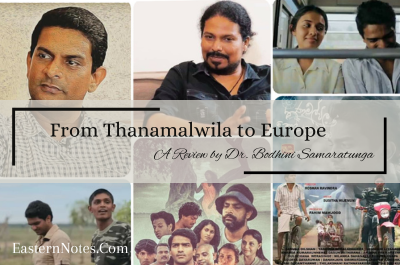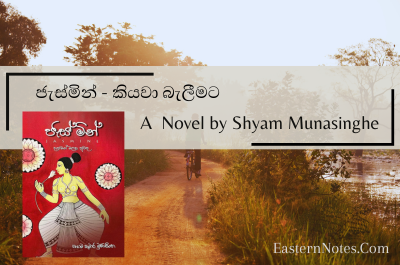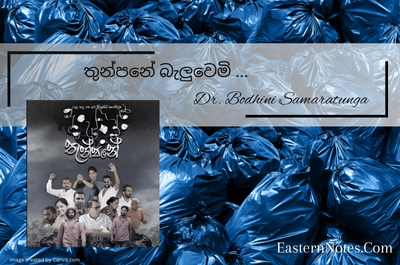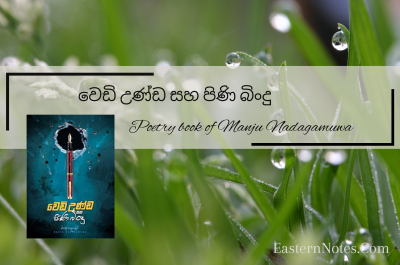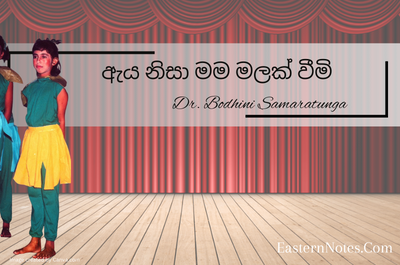My 2 cents on Thanamalvila Kollek – තණමල්විල කොල්ලෙක්
Having heard about this momentous heart-stopper drama from many friends, I started watching the missed episodes on YouTube and soon became a fan of it. The storyline a friend summed up in a few words made me wonder how it could be of any interest as it was about a timid guy from a village called Thanamalwila who ended up in Europe. I, who had studied and worked in Europe for a considerable time, have met several youths from rural villages of the south and north. They all shared their struggles to find comfort in a European country. That struggle was never easy.
At once, the word “Thanamalwila” brings up its popularity for a plant that everyone knew about but never spoke out in the open. “Thanamalwila Kollek,” (A lad from Thanamalwila ) which “happened” for real on television, has made a significant impact on this and silently created a mark for the society to remember this village name beyond the so-called ” plant, “and yet created fireworks all over the tele space with spectators of many kinds! Having watched it since the start, I felt it was a realistic emotional journey through the society we grew up in in the 90’s.
Even though it was initially broadcasted through Television, it soon created a massive, vivid audience through youtube, trending it as number one. This magic tiptoed all over social media platforms, creating many fan clubs with reviews, poems, and paintings for the tele and its characters. All this hype happened within a few episodes of the drama.
What made this so special ? is the next question. After watching these episodes from the beginning, I felt that this is one of the most carefully woven and fine tuned tele dramas which has spread a vibrant colorful tone through various realistic aspects. The ultimate feeling of “this is my story” has created a whirlpool in one’s mind with flashbacks and many journeys down the memory lane. The dialogs, situations and sceneries are chosen and blended well to meet the core essence of the socioeconomically beaten people, era and vicinity.
The discussion that mainly focuses on Love and relationships through voiceless acts have caught the eye of the viewer. The love that we speak of through “attractions and owning” is taken into a higher platter and it sure does unveil the limitless love and kindness in one’s mind. This was very well expressed through less spoken moments between ‘yashodhara’ the elderly female character and ‘deeptha’ the main male character, (her friend’s brother). The love shared among friend circles is also felt.
“Friendship is the purest love. It is the highest form of Love where nothing is asked for, no condition, where one simply enjoys giving”, said Osho.
When it comes to friends and their problems, “Oney yatibadak” says “patholaya” , the most loved and adored character in the earlier episodes, who jumps in to save anyone in any hassle or hazardous situation. The socio economic struggle of the youth of rural villages have been portrayed well through the stories of this team of friends.
Vivid combinations of forgotten artistic treasures have significantly impacted the main viewers. For instance, two main characters discussing the importance of reading books with the dialogs based on Sri Lanka’s legendary writer Martin Wikramasinghe’s story books such as “Gamperaliya, Kaliyugaya, Yuganthaya have made a social arousal aiming the youth, which has made them want to read these books.
It also depicts the effects of war on this country (decades-long war which ended in 2009) and how it affected the rural communities of Sri Lanka. It was when youth from the South joined forces, and some ended up in garment factories. Socioeconomic deprivation being the critical factor, we cannot forget the attitude created towards the military during the era of war against terrorism. ‘Kithula,’ the character wanting to join the army, has gained considerable fan attraction for his act as such a youth. The majority of Sri Lankans glorified the efforts of tri forces.
Social norms and beliefs are also discussed on a higher platter, sometimes making us wonder what went wrong in this country. Deeptha’s father’s paintings have always portrayed the forthcoming events, and this is the magic of the script incorporated well with the social events. Even though there are fewer episodes and less time for each character, they are felt more during those voiceless tiny moments, creating magnificently heartfelt effects. Most of all, it has shown the importance of being a listener in a society full of noise.
We see that Deeptha (the main character) is a good listener in a society that lacks listeners! We only listen to answer the part of the story that is important to us but never listen to the latter. This has always created chaos in our day-to-day lives, and I am ever grateful for this drama for emphasizing this fact in a way that even a mundane mind could grab. Some have even criticized it as artificial to say that “he is a good listener,” but I think we need listeners and must become one!
These simple dialects and actions have told us each character’s life story. That brings out the beauty of the script and direction of this tele. Every episode brings in challenging aspects of the society we live in. The situational dialogs this writer brings are not merely coincidences but carefully visualized socially important aspects; real eye-openers!
Chandrakumara – the friend Deeptha (main character) meets in Colombo, takes us on a massive mind-trembling journey where one reveals what went wrong in this society and the country’s ruling system. In one of these intellectual conversations, he points out the thinking patterns that society has adhered to for centuries. “When art emphasizes or brings in “ideals” to this society, corruption should not be tagged along; if so, such acts should be condemned as barbaric, and nothing else,” Chandra Kumara explains. Chandrakumara, a guy who thinks of ways to bring goodness and hold standards, has no ground to stand on struggles in an economically deprived life.
We have come to an end by the time I write this note. Deeptha, having found his love in Europe, seemed to be settling there when he heard of his father’s demise. This drama had kept us waiting for the weekends for the past couple of months. It has created many conscious conversations in society and cyberspace. It is one of the most felt, splendid notations of a rich, versatile teledrama script. Undoubtedly, the best that appeared from the magical wand of the script writer Susitha Wijemuniwas was molded into the right shape by the director, Mr.Roshan Raveendra.
The landscapes as a whole have blended in patiently and that has always caught my heart. These wordless frames of sky and earth in different forms and colours have made a huge impact on this teledrama. High praise should be added to the person behind the camera, Mr. Thisara Thulwan. Life is indeed a moment of emotional upheave created through such magnificent yet simple flashbacks ! A cheer to all involved including the director, scriptwriter, producer and the tele drama crew who have made this massive script into action.
Thanamalwila Kollek is a teledrama and the inarticulate chapter of many youngsters in this country. It is the voice of this country’s unseen, unspoken, cornered humans. The socially stigmatized, politically suppressed past of this country. The vanished or silenced essence of the struggles in this society! These written chapters of the voiceless struggles have undoubtedly greatly impacted the Sri Lankan Teledrama sphere.
Just a few questions with the end of this magnificently artistic and realistic teledrama
Is this the end? Are we done with it? Are we just enjoying the artistic value of this drama, or do we hear the hidden message that urges us to rise for the betterment of this society?
Kudos to the creator of the story, Susitha Wijemuni, and the director of the teledrama, Roshan Ravindra.
Dr. Bodhini Samaratunga

